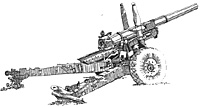 Marvin Scott
Marvin Scott
This is a request for help with research. I recently read Walter J. Boyne’s The Difference of Airpower upon History. It’s a very comprehensive book.
At one point Boyne mentions a book A Short Treatise on the Uses of Balloons and Field Observations in Military Observations, by Major General John Money, 1803 in London. Boyne reports [p381] that Money did some ‘wargaming’, “he went on to assert that the British could have kept the colonists in check if England had been able to use balloons during the American Revolution”.
I have tried to get a look at Money’s book but there are only two copies in the US and they are not available for loan.
Would some SWA member on your side of The Pond be willing to look up Money’s book and report on it? Does he give specific details on where and how balloons would have helped? How does he think balloons would have changed the battles?
Balloons in the AWI are not such a leap. The first balloon flight was in 1783 – very close to the war. By 1790 the French were using balloons – I think – “First Republic” armies used them.
A member with information can contact me using email or by regular mail at: Marvin Scott, 909 Furman Drive, Ames, IA 50010-5015, USA. Perhaps he could write to LW and tell us all. My email skills are limited and I can’t read .pdf files. I would be willing to do research in return and/or cover expenses.
[The Late] RON MOORE:
All my wargaming is based (loosely) on Napoleonic times so I have not yet used a ‘Forward Observation Officer’ [FOO] and neither have I read a report of a wargame including them. Perhaps many gamers have not heard of them, so let me write a few words about them. FOOs, often on their own but sometimes (I was told) accompanied by a signalman or, in my days, a wireless operator, would be well in advance of their artillery and would endeavour to keep their guns informed of the target location and then whether the guns were hitting the target.
At Salerno on the West cost of Italy, when Jerry was counter-attacking in force after the Allies landed there, the destroyer on which I was serving carried out under direction of an FOO a series of bombardments to help the Allied troops maintain their position when under attack. Without a FOO to guide our bombardment we might have shelled our own troops, because we were ‘firing blind’ – i.e. firing at an unseen target. Out main armament were four 4” guns, mounted in pairs, one pair on forecastle and one pair down aft.
It was easy to miss or misunderstand an FOO’s directions over the radio, even at comparatively short range, bearing mind that one’s attention was also taken by occasional enemy aircraft, or the possibility of attack by U-Boats or some madly suicidal fools in E-Boats, or return bombardment by enemy artillery. Salerno was where we first made the acquaintance of Jerry’s glider bombs whose flight was controlled by the aircraft which dropped them. Quite exciting they were!
Our Gunnery Officer’s Report reads – “On 14 September 1943, in the 45 minutes from 1205 to 1250 we fired 90 rounds of 4” (target – tanks), and in 15th between 1445 and 1530, we fired 36 rounds (target – tanks), and in the 15 minutes from 1540 to 1555 we fired 43 rounds (target – troops). From the shoot between 1445 and 1530 we knocked out 18 from a group of 21 tanks.” That illustrates the value of the FOO. In my opinion FOOs were largely unsung heroes, mostly Royal Artillery bods I believe.
I should mention that our 4” shells each weighed 65 lbs and had to be manhandled into the breech of the gun. That explains why I, a 9 stone weakling, was not part of a 4” gun crew!
Back to Table of Contents -- Lone Warrior # 148
Back to Lone Warrior List of Issues
Back to MagWeb Magazine List
© Copyright 2004 by Solo Wargamers Association.
This article appears in MagWeb.com (Magazine Web) on the Internet World Wide Web.
Other articles from military history and related magazines are available at http://www.magweb.com
